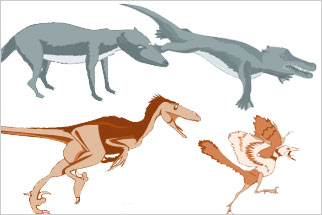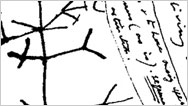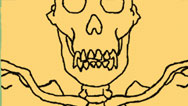Fossil Evidence
- By Rima Chaddha
- Posted 11.01.07
- NOVA
In 2004, scientists digging in the Canadian Arctic unearthed fossils of a half-fish, half-amphibian that all but confirmed paleontologists' theories about how land-dwelling tetrapods–four-limbed animals, including us–evolved from fish. It is a classic example of a transitional form, one that bridges a so-called evolutionary gap between different types of animal. In this slide show, examine five important cases.
 Launch Interactive
Printable Version
Launch Interactive
Printable Version
Examine five transitional species that fill so-called gaps in the fossil record.
Credits
Images
- (all illustrations)
- © NOVA/WGBH Educational Foundation
- (nerve cells)
- © Image Source/Corbis
- (red blood cells)
- © Micro Discovery/Corbis
- (Hox genes of fly, Hox genes of mouse)
- adapted by Cold Spring Harbor Laboratory Press/original image © Sinauer Associates, Inc.
- (stained fly embryo, fly images, imaginal disk images)
- Courtesy Nipam Patel
- (baby)
- © Julie Merchant/istockphoto.com
Related Links
-

The Four-Winged Dinosaur
Surprising fossils from northeastern China spur a debate over how birds evolved.
-

A Brief History of Life
An overview of the history of life on Earth, from the earliest bacteria to the first modern humans
-

Darwin's Predictions
Over 150 years later, science continues to confirm most of Darwin's conjectures.
-

Compare the Skeletons
The bones of chimps, early human ancestors, and modern people reveal what it takes for us to walk upright.
You need the Flash Player plug-in to view this content.

